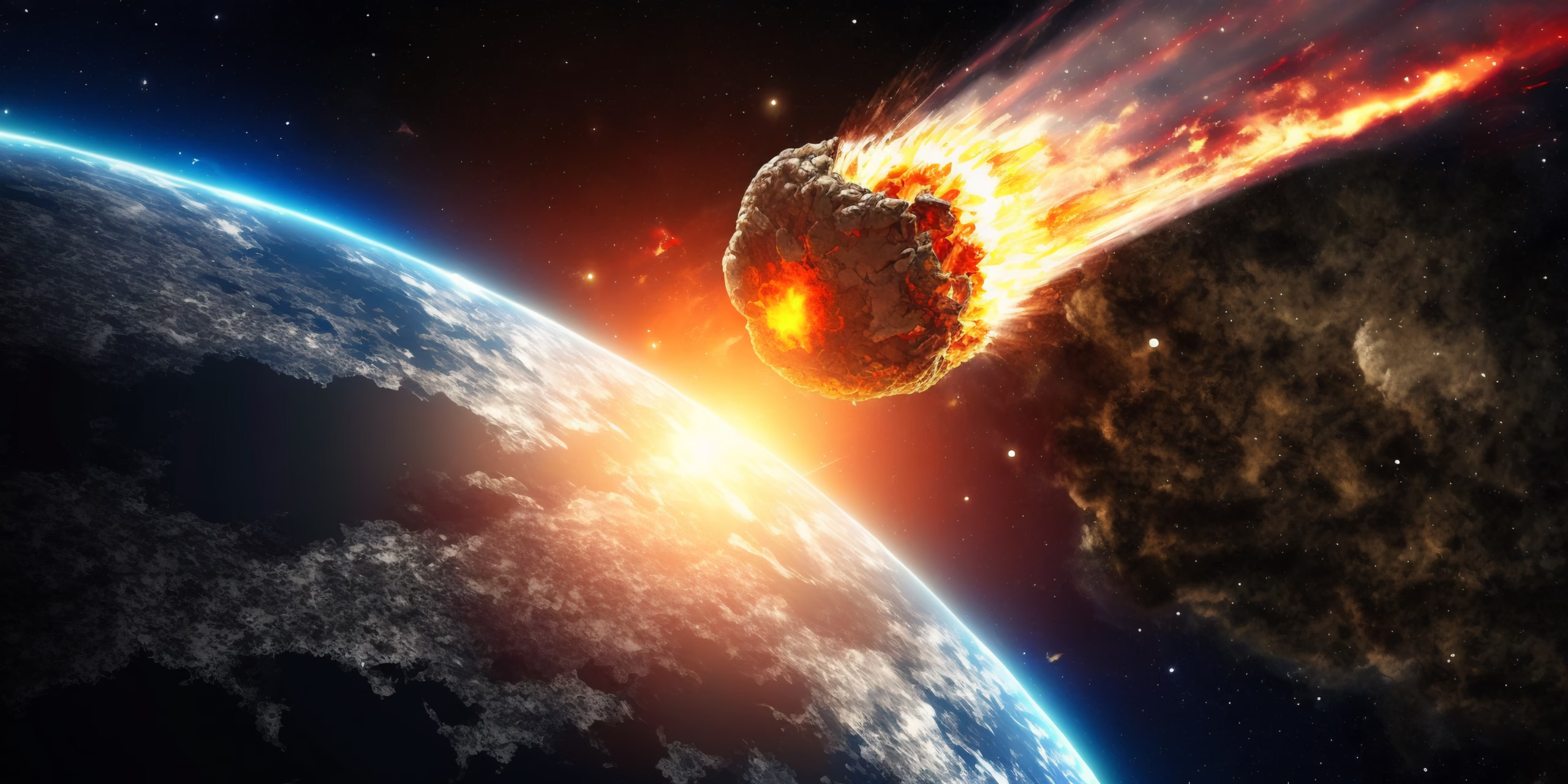A tiny rock or particle that comes from space is called a meteoroid. These objects travel through the solar system, orbiting the Sun just like planets. Meteoroids vary in size, from tiny grains of sand to enormous boulders. When a meteoroid enters Earth’s atmosphere, it speeds up dramatically and begins to burn due to friction with the air. We call this fiery streak across the sky a meteor or a “shooting star.” However, if the meteoroid survives this journey through the atmosphere and lands on Earth, it’s known as a meteorite.
The Growing Risk of Meteoroids: Are We Prepared for a Potential Impact?
The risk of a meteoroid impact has grown over the years, largely due to advances in technology. Thanks to modern space programs and telescopes, we now have the capability to detect and track meteoroids that come close to Earth. Scientists are discovering more and more objects in space, making it clear that the threat is real. However, While we are detecting more meteoroids than ever before, we remain unsure: Are we fully prepared for an impact?
The probability of a catastrophic meteoroid impact happening tomorrow is still very low, but the growing number of detected near-Earth objects (NEOs) is raising concerns. It’s important that we not only track these objects but also develop the technology to deflect them if needed.
How Technology is Detecting Meteoroid: Early Warning Systems in Space
Technology has advanced to a point where we can now detect and track meteoroids long before they reach Earth. Early detection is key to planetary defense, and several systems are in place to monitor space for any potential threats. One of the primary technologies used for this purpose is radar. Radar systems can scan the skies for objects in space, allowing scientists to track their paths and predict if they might collide with Earth.
Another essential technology is infrared telescopes. These telescopes detect the heat emitted by space objects to spot meteoroids, even if they are too faint to be seen with regular telescopes.
Meteoroid Defense: How Technology Could Prevent Catastrophic Impacts
Once a meteoroid is detected, the next step is defending against it. Scientists are actively developing technology to stop or divert these space rocks before they strike. One potential solution is the gravity tractor. This concept involves sending a spacecraft to fly alongside the meteoroid. The spacecraft would exert a small gravitational force on the meteoroid, slowly changing its trajectory over time. By shifting the meteoroid’s path, we could prevent it from colliding with Earth.

Another approach under consideration is to use kinetic impactors—spacecraft that would intentionally crash into the meteoroid at high speeds. Although these methods are still in the experimental stages, they hold promise for preventing a catastrophic impact.
Can We Really Stop a Giant Meteoroid? Analyzing Current Defense Solutions
The possibility of stopping a giant meteoroid is a daunting task. While smaller meteoroids may be deflected with existing technology, the defense against a massive space rock is still uncertain. Currently, one of the most promising projects is NASA’s DART (Double Asteroid Redirection Test). DART designs to crash a spacecraft into an asteroid to change its orbit, providing valuable data for future defense strategies.
While scientists are still developing these technologies, they are also considering using nuclear weapons to destroy or deflect a giant meteoroid. However, the potential of these solutions offers hope for a safer future.
Meteorite Impact: How Technology Could Save Lives in the Event of a Collision
In the unfortunate event of a meteoroid impact, technology could play a crucial role in saving lives. Early detection systems would allow for timely warnings, giving people a chance to evacuate danger zones. Satellite technology could monitor the impact’s effects in real-time, helping emergency teams respond quickly and efficiently.
Additionally, advanced modeling software can simulate the impact’s aftermath, helping governments and organizations plan evacuation routes, manage resources, and mitigate damage. While we can’t completely eliminate the risk, technology helps ensure that we are prepared in case the worst happens.
What Would Happen If a Meteorite Struck Earth? Exploring Possible Scenarios
If a large meteoroid struck Earth, the consequences could be severe. A small-to-medium-sized meteoroid might cause localized destruction, such as wildfires or earthquakes, but the aftermath would likely be manageable. However, a massive meteoroid impact could be catastrophic.
In the worst-case scenario, a massive meteoroid could throw enough dust and debris into the atmosphere to block sunlight, leading to a drastic drop in temperatures. This could cause a “nuclear winter,” which would devastate agriculture and food supplies worldwide by keeping temperatures low for months.
The Future of Planetary Defense: Preparing for the Meteorite Menace
Planetary defense will become increasingly important in the coming years. As more countries launch space missions and our understanding of meteoroid threats improves, it’s crucial to prepare for the worst-case scenario. The next decade will likely see advancements in detection systems, deflection technologies, and global cooperation on planetary defense.
The Importance of Global Cooperation in Meteoroid Defense Technologies
Meteoroid defense is not just a national issue; it’s a global one. The threat of a meteoroid impact is a planetary problem, and it requires a global solution. Countries must work together to track near-Earth objects, share information, and develop defense systems. The development of planetary defense technologies should be a cooperative effort, combining resources and knowledge to protect all of humanity.
A Nod to Spain, Portugal, and Meteorites
While our focus is on planetary defense, it’s interesting to note that regions like Spain and Portugal have had their own experiences with meteorite activity. For example, meteorite Spain Portugal has witnessed several meteorite falls, sparking both scientific interest and public curiosity. The fall of a meteorite near the village of Almeida in Portugal provided valuable insights into the composition and origin of these space rocks.
These events remind us that the meteorite threat is not confined to space—sometimes it’s closer to home than we think.

